One Hundred Years of Service: How the Birds’ Nest Orphanage has Changed Lives for a Century
In November 2018, the Near East Foundation Board of Directors made a trip to Lebanon to visit NEF’s active programs. After an eventful week of visiting Near East Foundation project sites, individuals helped by NEF programs, and meeting with beneficiaries and community leaders and partners, the Board had the opportunity to visit the Birds’ Nest, 98 years after it was first purchased by Near East Relief.
Each orphanage run and sponsored by Near East Relief had a life, character, and story all its own. The Birds’ Nest Orphanage, as unique and special as its name, was home to thousands of orphans following the Armenian, Assyrian, and Anatolian Greek Genocide. Today, the Birds’ Nest continues this noble purpose, providing safety, security, and stability to some of Lebanon’s most vulnerable children.
**********************

Exterior of the Birds' Nest, c. 1925
One Hundred Years Ago
Located atop a hill by the coast, the Birds’ Nest was originally the home of a wealthy pasha, a Turkish officer of a high rank, in the city Byblos, also known as Jbeil. Described as lavishly decorated by an Italian artist, Nellie Miller, who visited the orphanage in 1923, was taken aback by the beauty and magnificence of the location, as well as the unbridled joy of its young inhabitants. During her work for Near East Relief, Ms. Mann wrote extensive letters back home, describing the beauty, pain, tragedy, and resilience of the Near East following the Genocide. Her letters from the Birds’ Nest are particularly poignant and transport the reader across the world and through time to catch an unparalleled glimpse of this unique orphanage.
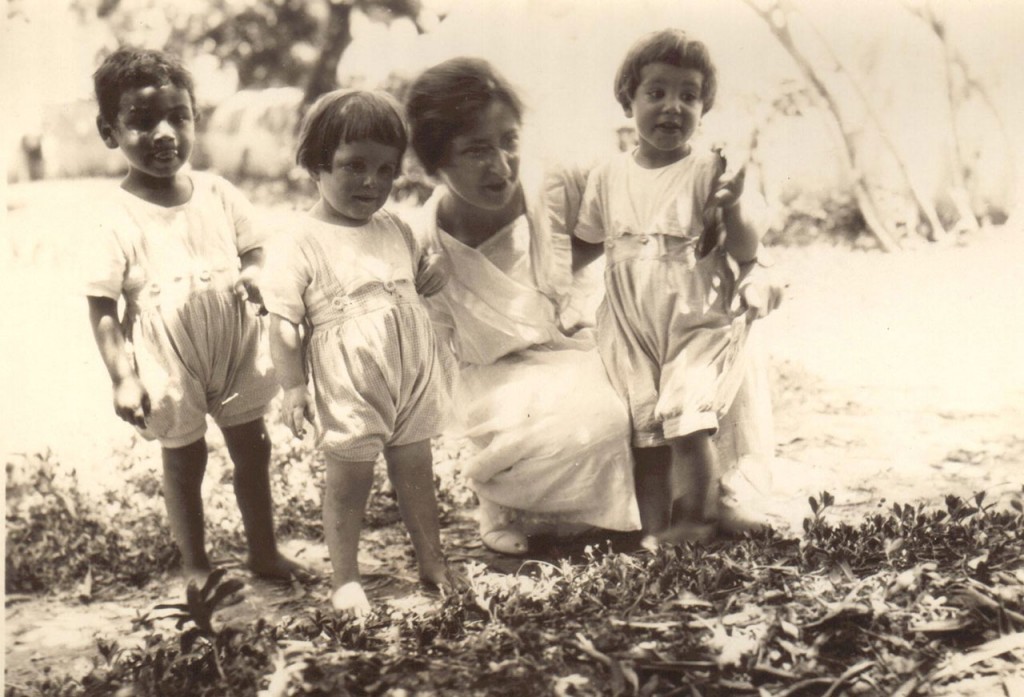
Nellie Miller Mann with three children from the Birds' Nest, c. 1923.
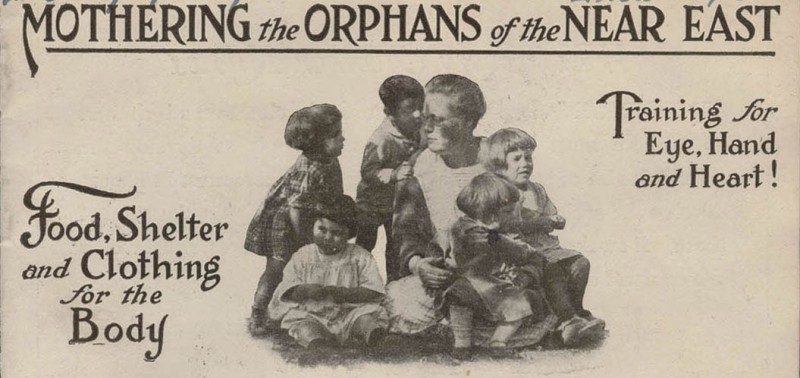
The Birds’ Nest, while open to children of all ages, was primarily home to children under nine. Upon arrival, many of the children were malnourished and sickly, but that did not deter the dedicated staff from their goal of saving as many children as possible. Central to this mission was the orphanage director, Maria Jacobsen (sometimes spelled Yacobsen).
A Christian missionary from Denmark, Maria Jacobsen, affectionately called ‘Mama Jacobsen’ by the children, was heavily involved in relief efforts in the Near East from the beginning. After briefly returning home in 1919 when she contracted typhus from one of the orphans she was trying to help, Jacobsen found her way to Lebanon and to the Birds’ Nest.
Image Right: Brochure featuring Maria Jacobsen and some of the orphans in her care, c. 1924.
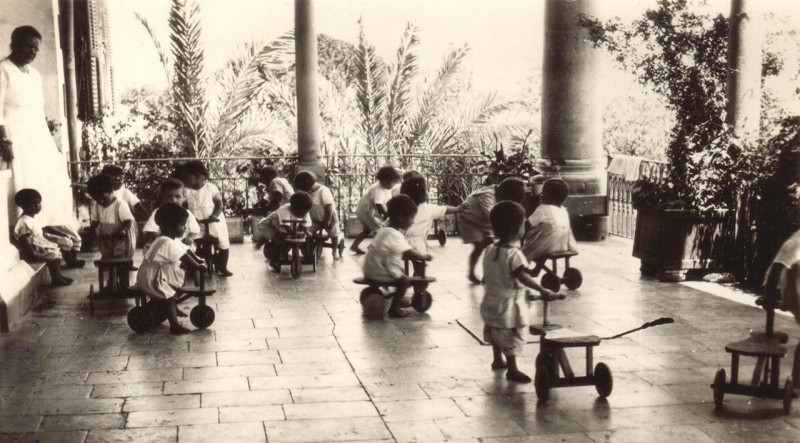
The Birds’ Nest tried to provide a home for the children and to give them the crucial skills they needed once they were old enough to live on their own. Perhaps more importantly, the relief workers tried their best to provide love and emotional support for the children, as well as whatever childhood treasures they could find. At one point, the boys at a neighboring orphanage created little trikes for the orphans to use in the Bird’s Nest courtyard.
Image Left: Birds’ Nest Children playing on carts made by older orphan boys at Maameltein Orphanage, c. 1924.
It is hard to overestimate the impact Jacobsen had on the lives of the children at the Birds’ Nest. As some of the youngest in the Near East Relief orphanage system, the children saved by the Birds’ Nest were at their most vulnerable. Many had no living relatives to care for them, and even more had no hope upon arrival for a better future. Through her dedication and commitment to not only providing the children with the critical education they needed, but to also preserving their cultural heritage, Jacobsen and her staff changed the course of their young lives forever.
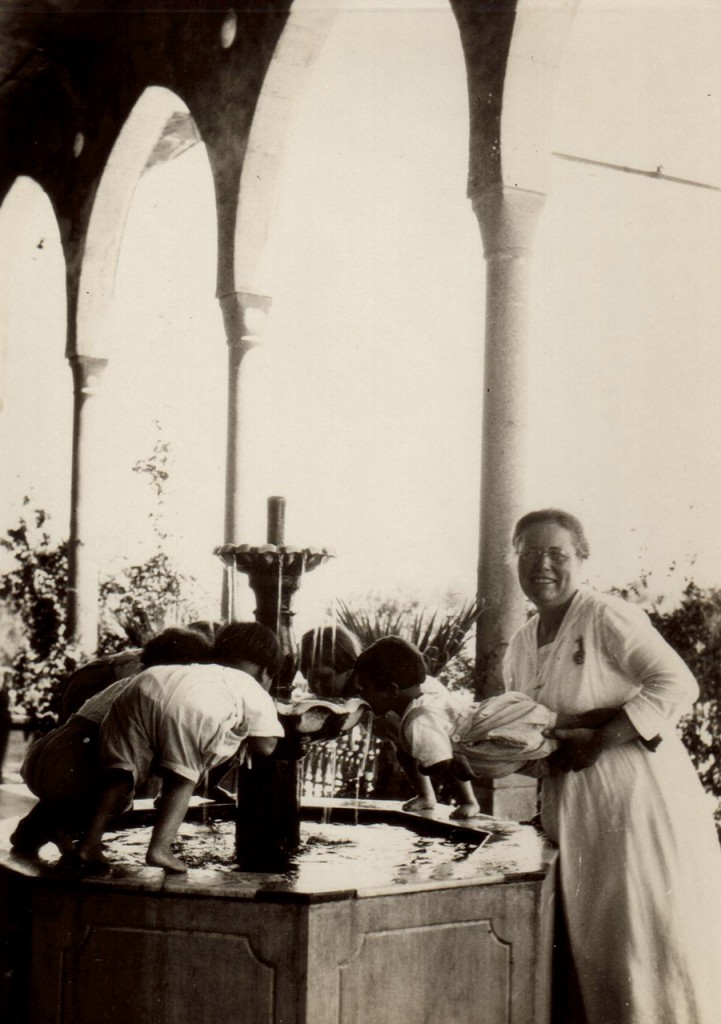
Maria Jacobsen holds a child up for a drink of water from the fountain on the terrace at the Birds' Nest orphanage, c. 1922.
For her service, in 1950 Jacobsen was awarded the Golden Medal of the Danish Kingdom, the first woman to ever receive this prestigious honor, and in 1954 she received the Gold Medal of Honor from the Lebanese Government. Maria Jacobsen passed on April 6, 1960 and was buried in the courtyard of the Birds’ Nest in accordance with her will.
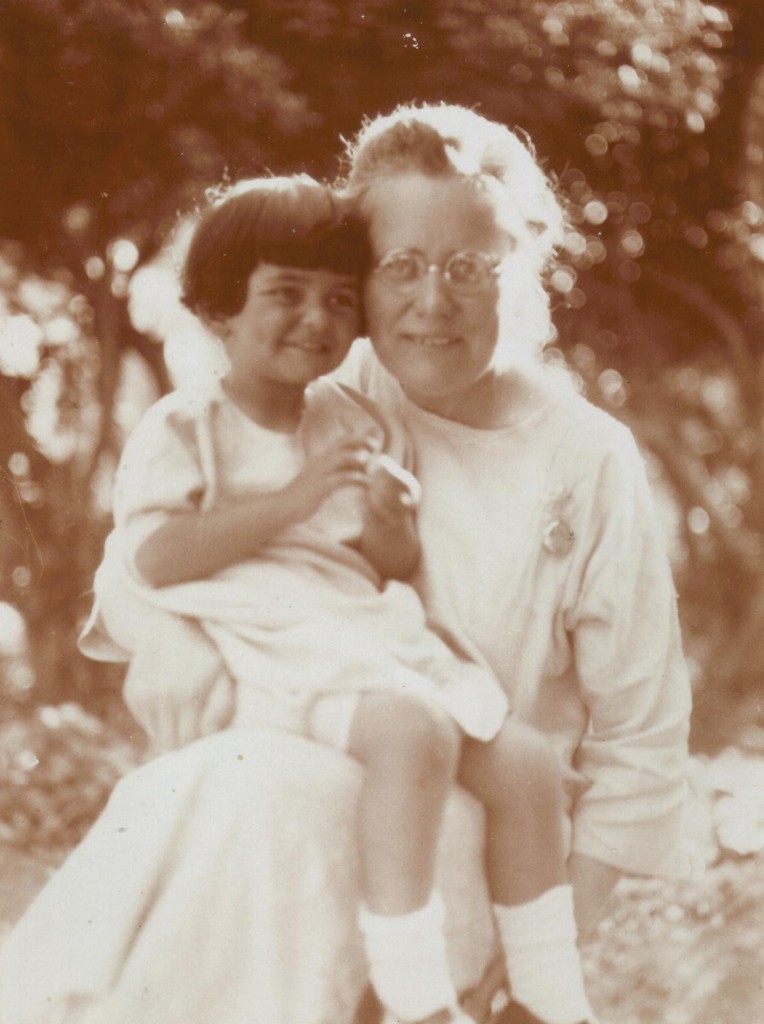
Maria Jacobsen with a child on her lap, c. 1924. Jacobsen adopted three orphans into her own family.
The magnificence of the entire place bespeaks unlimited extravagance on the part of our pasha friend. But it takes little reflection to judge that never has there been such joy within the walls of this beautiful palace.
If any of you mothers have felt a thrill of joy on coming home from a short shopping tour, when the children come running out to meet you, you can in a slight degree realize what happens when Miss Yacobsen comes home to her 400 little ones...
One Hundred Years Later
The Birds’ Nest stills stands as one of the only remaining Near East Relief orphanage still in operation, if not the only one. In 1928, the Birds’ Nest was acquired by the Women’s Missionary Workers (KMA), a Danish relief organization. KMA took over operations continued the work of NER until the Birds’ Nest was transferred to the care of the Armenian Catholicosate of the Great House of Cilicia in 1967, under whose care it remains today.
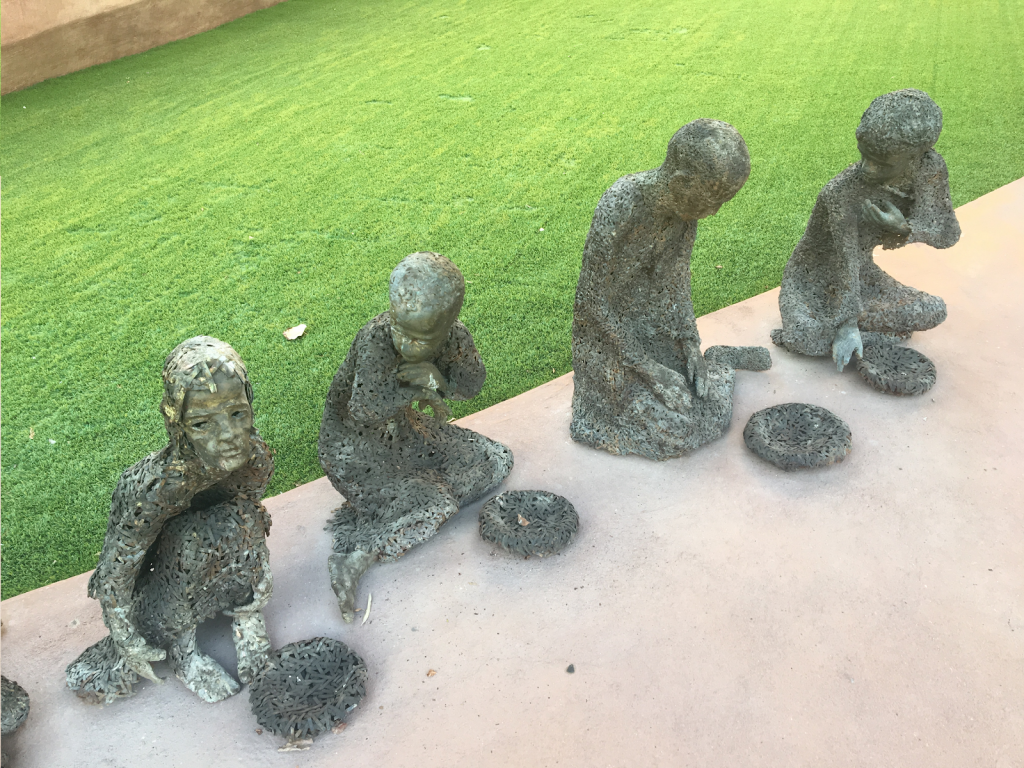
Statues of orphans lining the walkway at the Birds’ Nest, c. 2018.

Located in the middle of a heavily Armenian area, the orphanage serves as a focal point for the Armenian community in Lebanon.The orphan built cemetery, which is the resting place for dozens of genocide survivors, located on site is a poignant reminder of the horrors of the Genocide and serves as a commemorative place for the Armenian community to remember and mourn. Each year, members of the Armenian community travel to the cemetery to pay their respects and it has occasionally served as the official site for Genocide Commemorations.
Image Right: Cemetery at the Birds’ Nest, image courtesy of Armenian Weekly.
One hundred years after it first opened its doors, the Birds’ Nest still provides support, care, education, and shelter to vulnerable children. According to their mission statement, the Birds’ Nest endeavors to provide a second chance to children who are not given the basic gifts that life has to offer, such as a safe home, food, education, and spiritual and psychological nourishment. The orphanage is home to scenes not unlike the ones depicted in photographs from one hundred years ago. Even though a century separates them, the orphans who call the Birds’ Nest home today have a lot in common with their predecessors.

Children play in the Birds' Nest Courtyard, c. 2018
Today, this mission has expanded to include a separate museum dedicated to telling the story of the Armenian Genocide. Opened in 2015, The Armenian Genocide Orphans’ “Aram Bezikian” Museum documents the lives of Armenians at the fall of the Ottoman Empire, the tragic genocide that ripped the community apart and scattered it all over the world, and the roles played by various NGOs, like Near East Relief, in helping survivors recover and rebuild their lives.

The museum features three exhibits. The first presents the life of Armenians living in the Ottoman Empire before World War I in vivid detail and the genocide that began in 1915. The second highlights the work done by NGOs and missionaries following the genocide to provide as much aid as possible to orphans. The third and final exhibit shows how orphans were resettled and cared for in Lebanon.
Image Left: Exterior of The Armenian Genocide Orphans’ “Aram Bezikian” Museum. Image courtesy of The Armenian Genocide Orphans’ “Aram Bezikian” Museum.
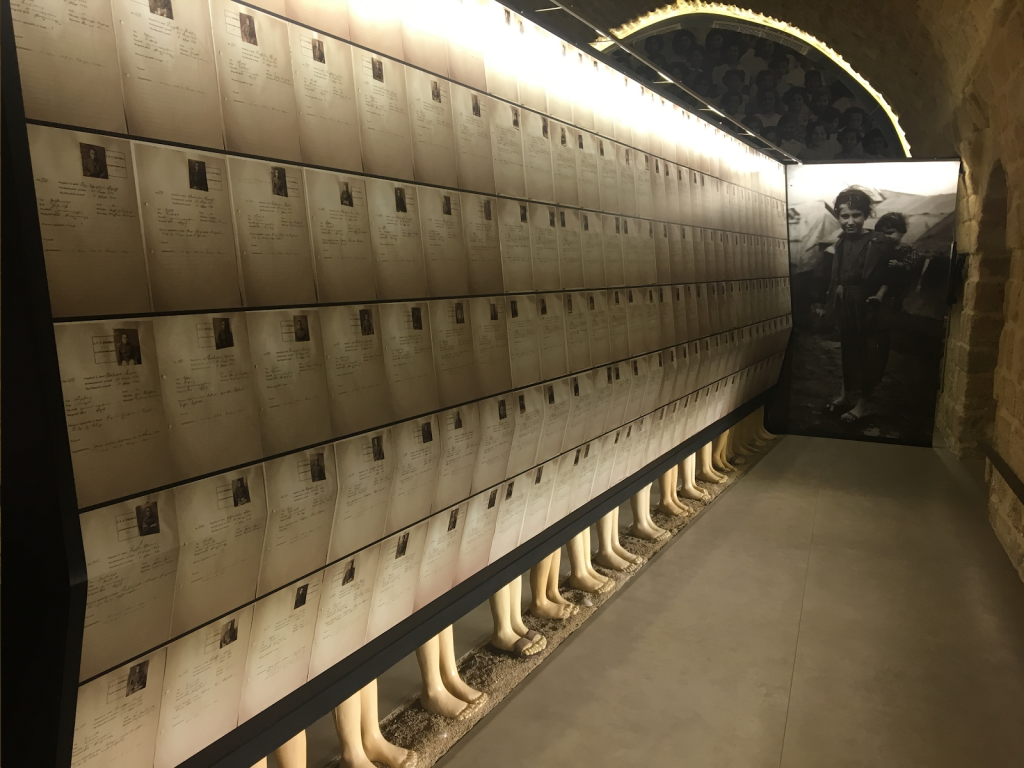
Exhibit at the Armenian Genocide Orphans’ “Aram Bezikian” Museum showing information about the orphans who were saved, c. 2018.
My wife’s and my recent visit to the Bird’s Nest Orphanage was a moving an inspirational experience. The thousands of Armenian orphans that were housed at this facility after World War I, and those orphans being assisted there today, serve to remind us of the impact which people of exceptional humanism can have on their fellow man. The Armenia Genocide Orphans Museum, housed next to the orphanage, is a haunting reminder of man’s darker side. The spirit of those orphans, who survived the Armenian Genocide call out to us from the museum’s exhibits to never forget their indomitable will to live.

View of Byblos from the Birds’ Nest, c. 2018.
On the day of its commemoration, His Holiness Aram I expressed his hope that the Armenian Genocide Orphans’ “Aram Bezikian” Museum would serve as not only a place of research, but as a place of commemoration that “will call the states of the world to work to guarantee that such atrocities never happen again.”
To learn more about the Birds’ Nest Orphanage and the great working being done there, the Armenian Genocide Orphans museum, and the work of the Near East Foundation follow the links below:
